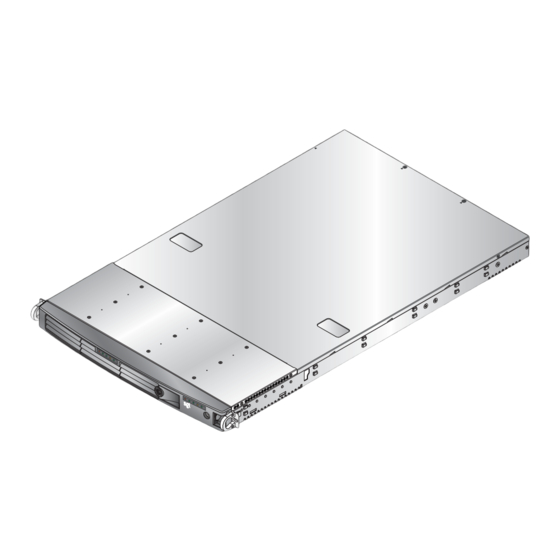
User Manuals: Silicon Graphics Altix XE320 Server
Manuals and User Guides for Silicon Graphics Altix XE320 Server. We have 1 Silicon Graphics Altix XE320 Server manual available for free PDF download: User Manual
Silicon Graphics Altix XE320 User Manual (248 pages)
Brand: Silicon Graphics
|
Category: Server
|
Size: 9 MB
Table of Contents
-
-
Introduction
29-
-
Memory32
-
Processors32
-
System Power35
-
-
-
-
-
Locking Tabs44
-
-
-
-
-
-
Jwd106
-
-
Power LED (LE1)107
-
-
ESD Precautions111
-
Control Panel113
-
System Fans115
-
Power Supply118
-
-
BIOS Settings
121-
Default Settings121
-
System BIOS130
-
Running Setup131
-
Main BIOS Setup132
-
-
BIOS Date133
-
System Date133
-
System Time133
-
Serial ATA Ports134
-
Type134
-
32 Bit I/O135
-
LBA Mode Control135
-
Transfer Mode135
-
Ultra DMA Mode135
-
Extended Memory136
-
System Memory136
-
-
Advanced Setup137
-
Boot Features137
-
Quickboot Mode137
-
Quietboot Mode137
-
ACPI Mode138
-
POST Errors138
-
Summary Screen138
-
Watch Dog138
-
Memory Cache139
-
Enable Master141
-
Latency Timer141
-
Option ROM Scan141
-
Slot1 Pcie X8141
-
-
Thermal Throttle143
-
Snoop Filter143
-
USB Function144
-
-
C1 Enhanced Mode145
-
CPU Speed145
-
Frequency Ratio145
-
Machine Checking145
-
DCA Delay Clocks146
-
-
-
Serial Port a147
-
Serial Port B147
-
Event Logging148
-
BAUD Rate149
-
COM Port Address149
-
Console Type149
-
Flow Control149
-
Hardware Monitor149
-
Firmware Version151
-
Ipmi151
-
Security155
-
User Password Is155
-
Password on Boot156
-
Boot157
-
Exit158
-
Discard Changes159
-
Save Changes159
-
-
-
-
Remote Control180
-
KVM Console180
-
Remote Power181
-
Virtual Media181
-
CD-ROM Image182
-
Chassis Control188
-
System Health188
-
Monitor Sensors190
-
-
System Event Log192
-
Alert Settings193
-
Change Password194
-
User Management194
-
Users and Groups195
-
Permissions196
-
KVM Settings197
-
Device Settings202
-
Network202
-
Dynamic DNS204
-
Security205
-
Certificate208
-
Date and Time210
-
Event Log212
-
SNMP Settings214
-
Maintenance215
-
Event Log217
-
Unit Reset218
-
Update Firmware218
-
Log out222
-
-
System Safety
231 -
Upgrading BIOS
239 -
Index
243
-
Advertisement